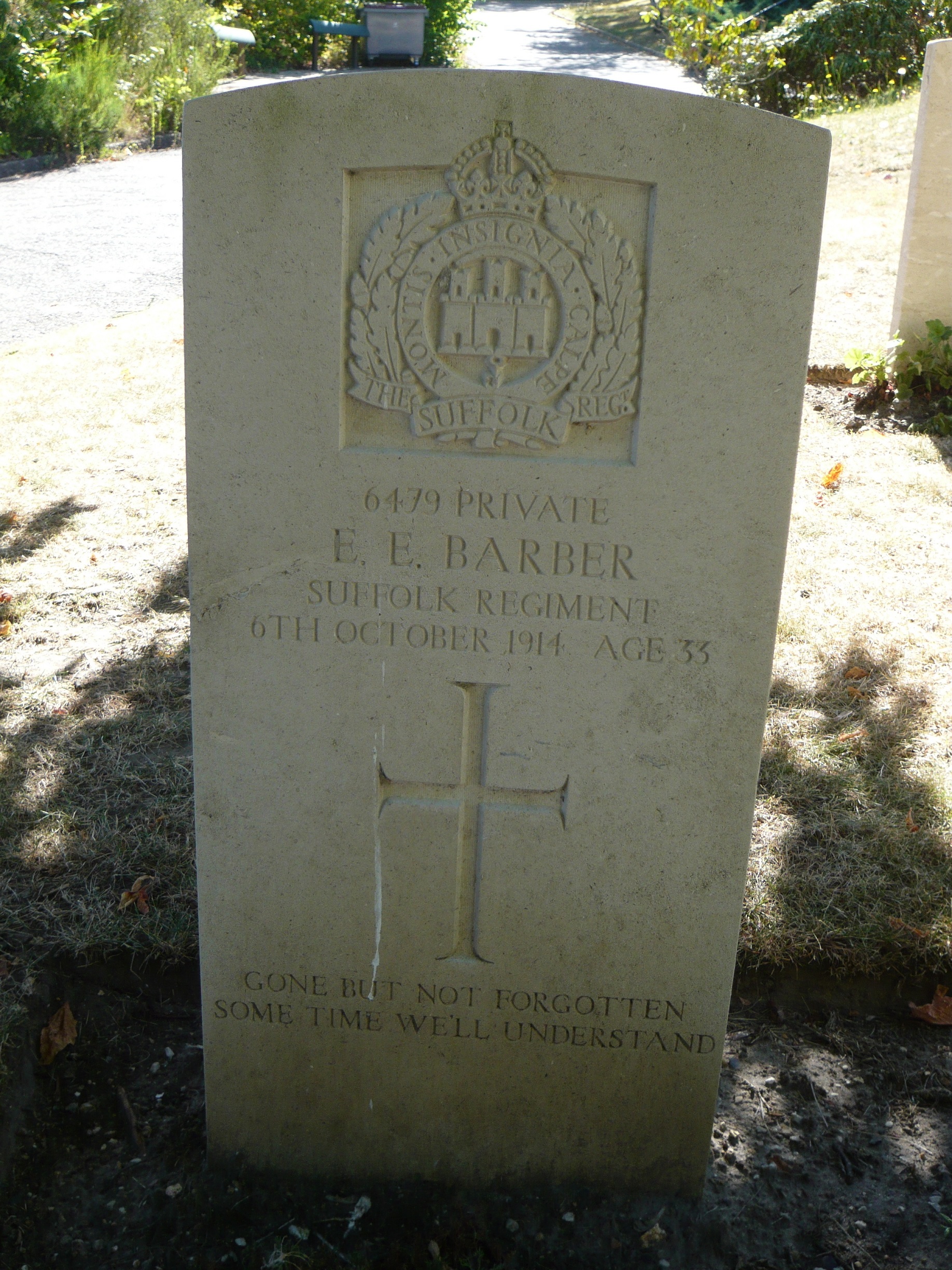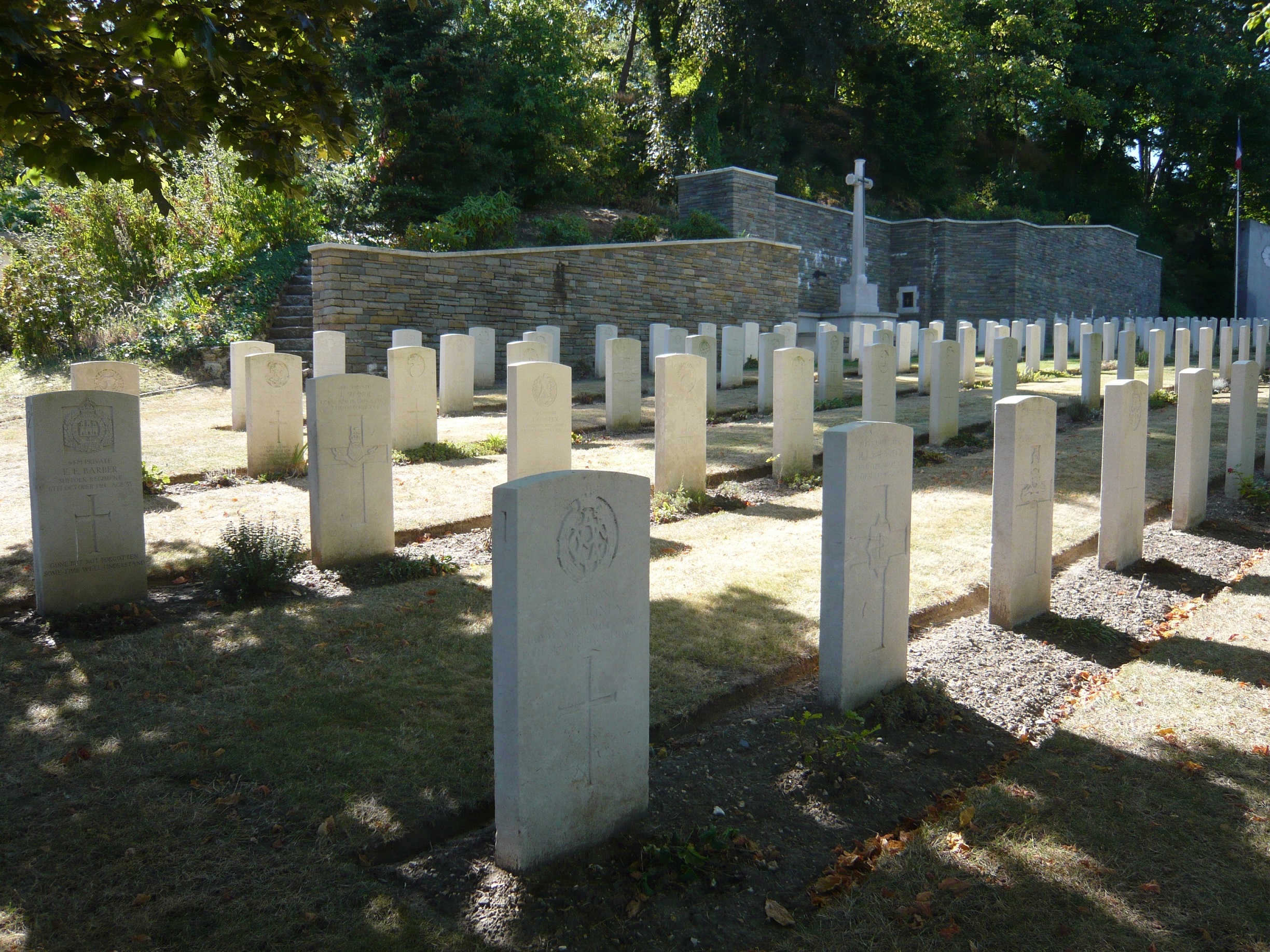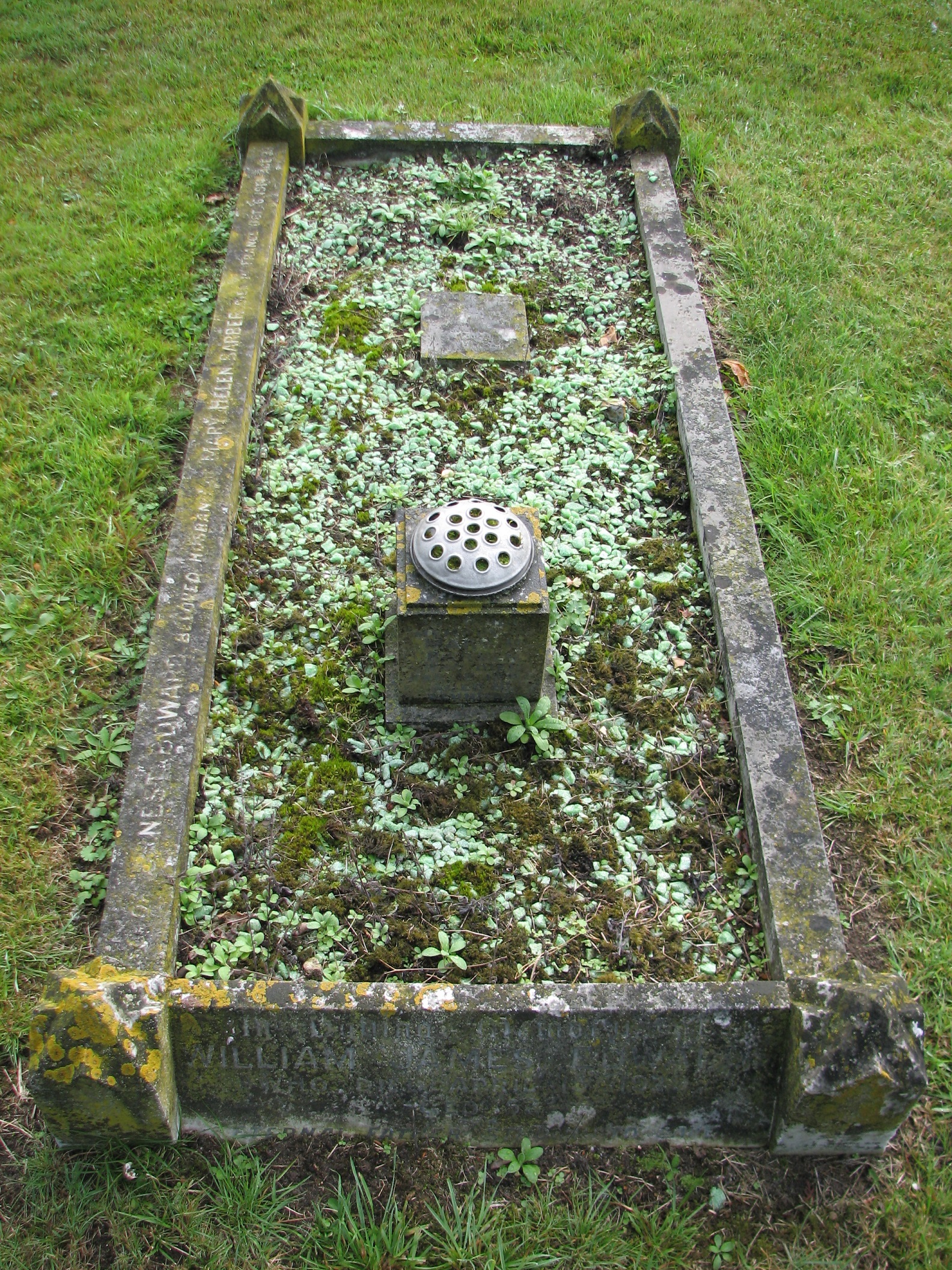Ernest Barber (1881 - 1914)
The second of the East Bergholt men to die in the Great War, Ernest was an Army Reservist. He was sent to France at the outbreak of the War in August 1914, where he served with 2nd Battalion, the Suffolk Regiment. He died of wounds on 6th October 1914, leaving a wife and 3 children.
- 10
- Died in the Great War
- 51.970413, 1.05876
Details
| Name: | Ernest Edward Barber |
| Service: | British Army |
| Unit: | 2nd Battalion, Suffolk Regiment |
| Regimental Number: | 6479 |
| Rank: | Private |
| Date of Death: | 6th October 1914 |
| Age: | 33 |
| Buried: | Row 2, Grave 1, Les Gonards Cemetery, Versailles, France |
The British Expeditionary Force, sent to France in the August and September of 1914 was famously dismissed as by the German Kaiser as a “contemptible little army”. It may have been small by continental standards, but it was made up of men who were pre-war regulars, and reservists. One of their number was Ernest Barber, a 33 year old Hurdle Maker from East End.
Family Background and Early Life
Ernest Barber was born on 31st August 1881 in Martlesham, near Ipswich, the son of George Barber and Maria Sheppard. George Barber was a Hurdle Maker, originally from Eyke (near Woodbridge), whilst Ernest’s mother was born in Harleston, Norfolk.
On Ernest’s birth certificate his middle name is shown as David, though later in life he seems to have dropped that name and changed it to Edward.
By the middle of the 1880’s the family had moved to Holbrook, where Ernest’s younger brother David was born in 1885. Tragedy struck in June of the following year, when Ernest’s mother died. Two years later George Barber married Mary Ann Pennell, from Holbrook, who bore him a daughter, Ellen.
The Barber family moved to East Bergholt in 1893, to live near Park Farm, at East End.
Militia and Army Service
Ernest appears to have initially joined the local militia, which was in some ways a precursor of the Territorial Army of today. He would have initially received several months of basic, military training before being returned to civilian life but being paid a financial retainer.
We know that in April of 1901, Ernest was in Guernsey in the Channel Islands, as part of the Suffolk Regiment’s Militia unit. It had been embodied in December 1899 during the Second Boer War, and sent to garrison Guernsey in place of regular Army units which had been sent to South Africa.
Presumably there was something about Army life which appealed to Ernest, for the evidence suggests that in April 1903, he joined the Regular Army – probably on terms of 3 years’ service with the Colours (i.e. full-time), and a further 9 years in the Reserve.
Life After the Army
After leaving the Army, Ernest worked for his father as a Hurdle Maker. He worked in Dodnash Woods, and often drove there from his home in East End in a buggy.
On 6th June 1906, Ernest married 25 year old Mary Helen Edwards, at Poplar in East London. Ernest brought Mary back to East Bergholt, where they lived in Albert Cottages. The following year, the first of Ernest and Mary’s three children was born – a son, who they named Ernest. He was joined two years later by a brother, who was named George and on 26th July 1914 by a sister, called Helenor.
War is Declared – Recall to the Colours
Just 8 days after Helenor’s birth, Great Britain declared war on Germany, following the latter’s invasion of neutral Belgium.
It was a condition of service that members of the Army Reserve were to be recalled to the Colours with immediate effect, upon a declaration of war. Consequently, on 4th August 1914, as part of the British’s Army’s mobilisation, all Reservists were ordered to report to their Regimental Depots the following day. Amongst the East Bergholt men included in this “call-up” were Ernest, and his brother-in-law, William Chiverton who was also from East End.
According to surviving official documents, Ernest disembarked in France on 23rd August, possibly as part of a group of 90 men who were to form the first reinforcements for the 2nd Battalion of the Suffolk Regiment.
It was the morning of 6th September before the reinforcements actually reached the Battalion. At the time the vast German attack on France had been halted primarily by the French Army at the Battle of the Marne, and the Allies were about to assume the offensive as the Germans retreated.
The 2nd Suffolks had been through a difficult time in the three weeks since they had disembarked in France on 15th August. During the Retreat from Mons, the Battalion had formed part of the British rear-guard at the Battle of Le Cateau. In the heavy fighting that followed, the Suffolks had suffered over 85% casualties – many of them taken prisoner, including George Watson from East Bergholt.
In Action
Just two days after the reinforcements joined the Battalion, they took part in an attack against the Germans – albeit in a support role. Over the next five days the pursuit of the retreating Germans continued – the Battalion encountering some enemy opposition, and suffering light casualties.
The 2nd Suffolks took a limited role in the Battle of the Aisne, during the middle of September. After crossing the river in the afternoon of the 13th, they remained in reserve for the next ten days, mostly in an orchard just north of the village of Missy-sur-Aisne. However on 23rd September the Germans discovered their position, and started heavy shelling. One man was killed, and eight wounded, including Ernest.
Ernest was wounded by shrapnel in the body, hip and leg. He was evacuated to No. 4 General Hospital, which was located in what had been the Trianon Palace Hotel at Versailles, on the outskirts of Paris. Whilst there, Ernest’s wounds necessitated an operation, as a result of which he died on 6th October.
Ernest Barber was 33 years old. His body was laid to rest in Les Gonards Cemetery, Versailles, France, though he is also remembered on his wife Mary’s grave.
Postscript
Mary Barber never remarried. “The Widow Barber” as she was known for many years, lived in Albert Cottages for the remainder of her life. She died at the age of 81 in 1962, and is buried in East Bergholt Cemetery.
Copyright © Mark Ashmore, 2024
- 10
- Died in the Great War
- 51.970413, 1.05876




